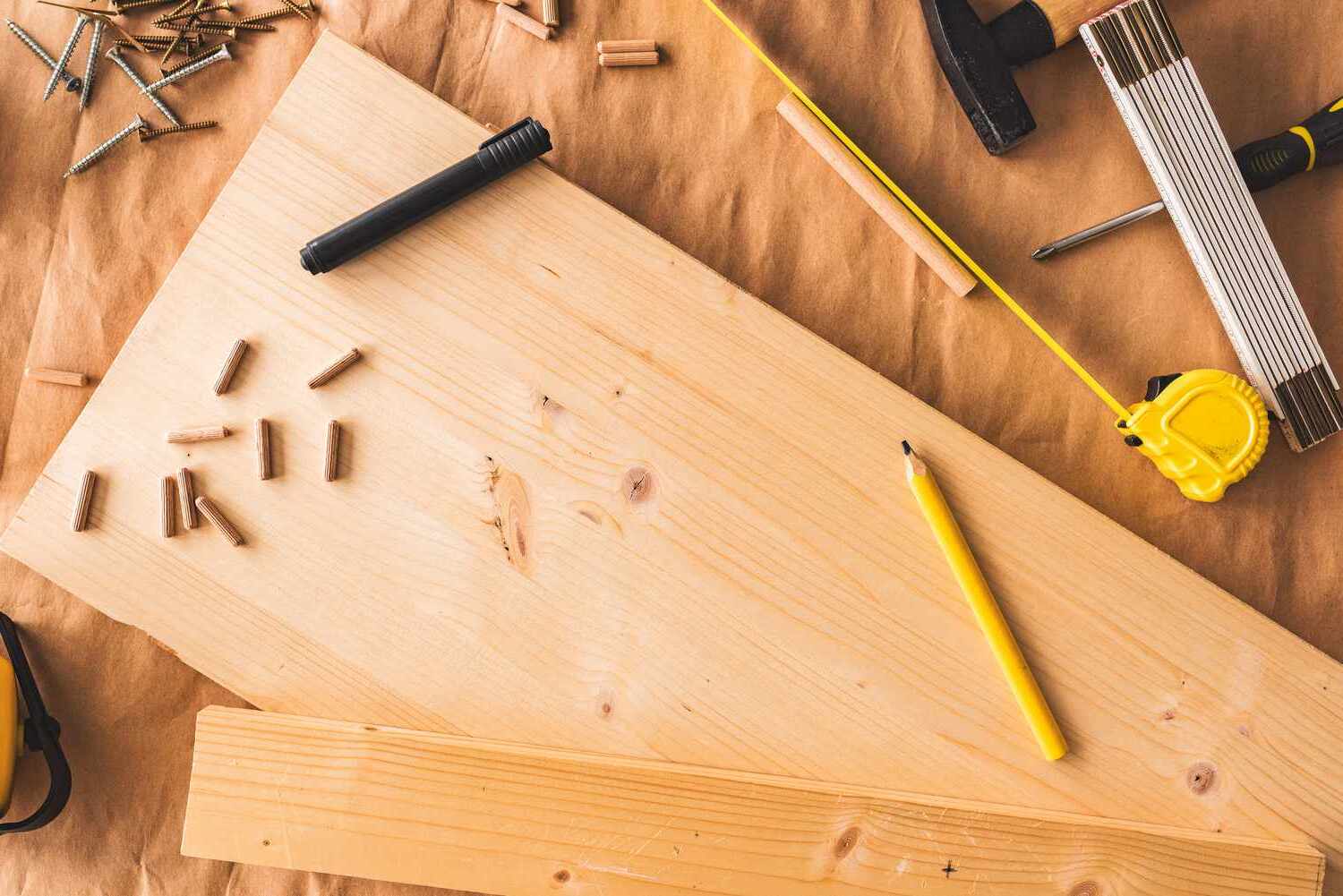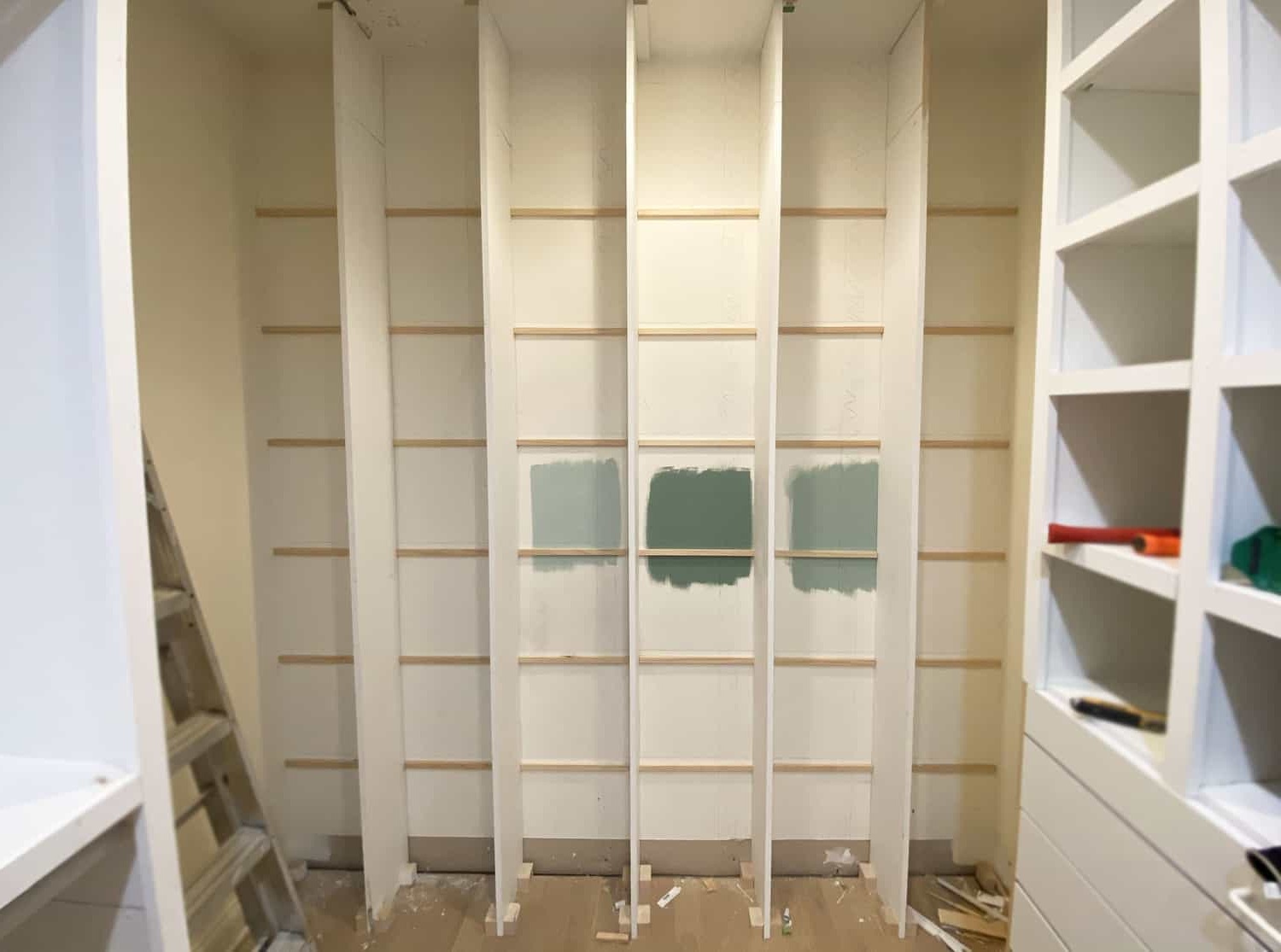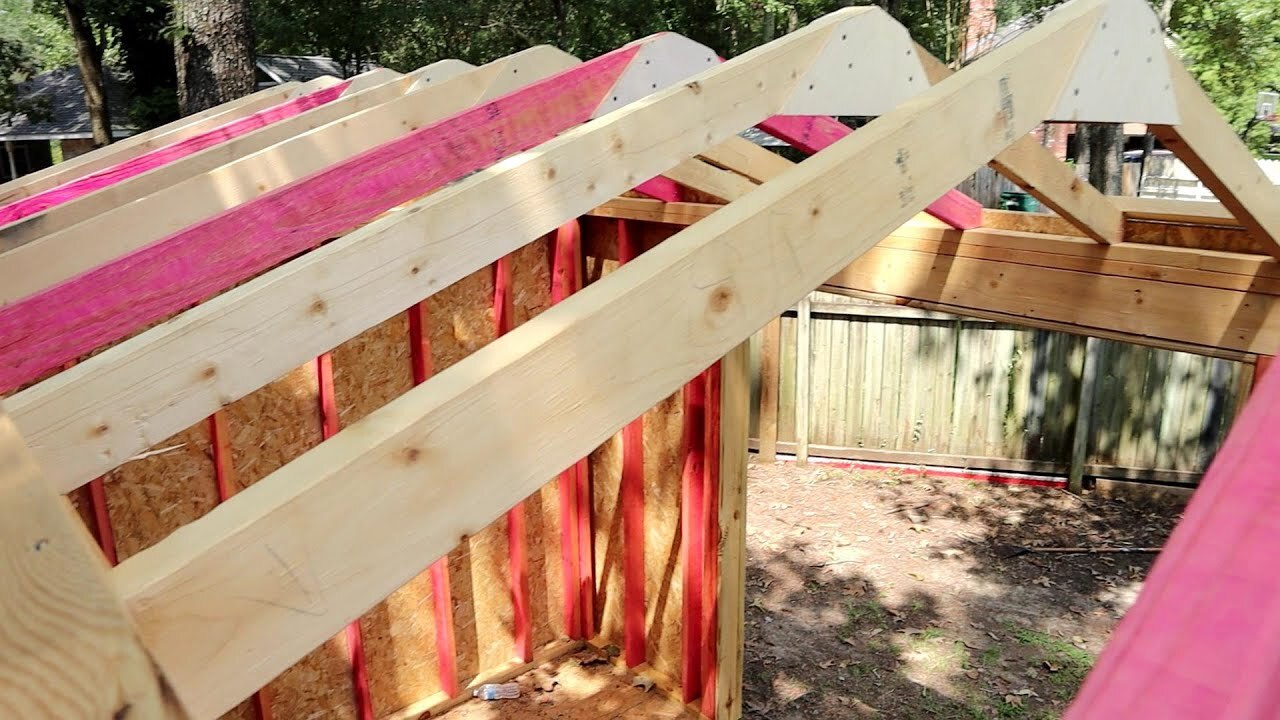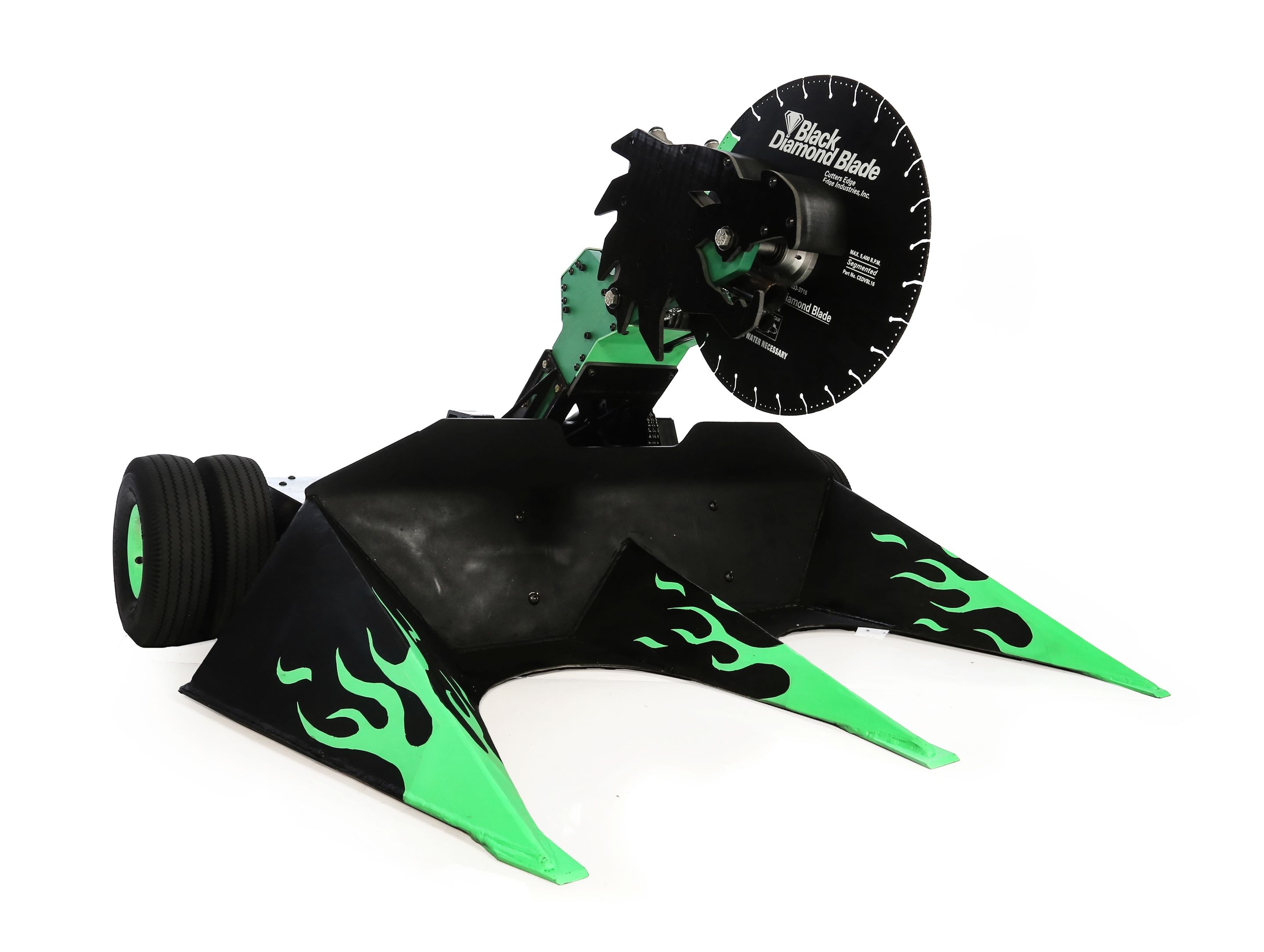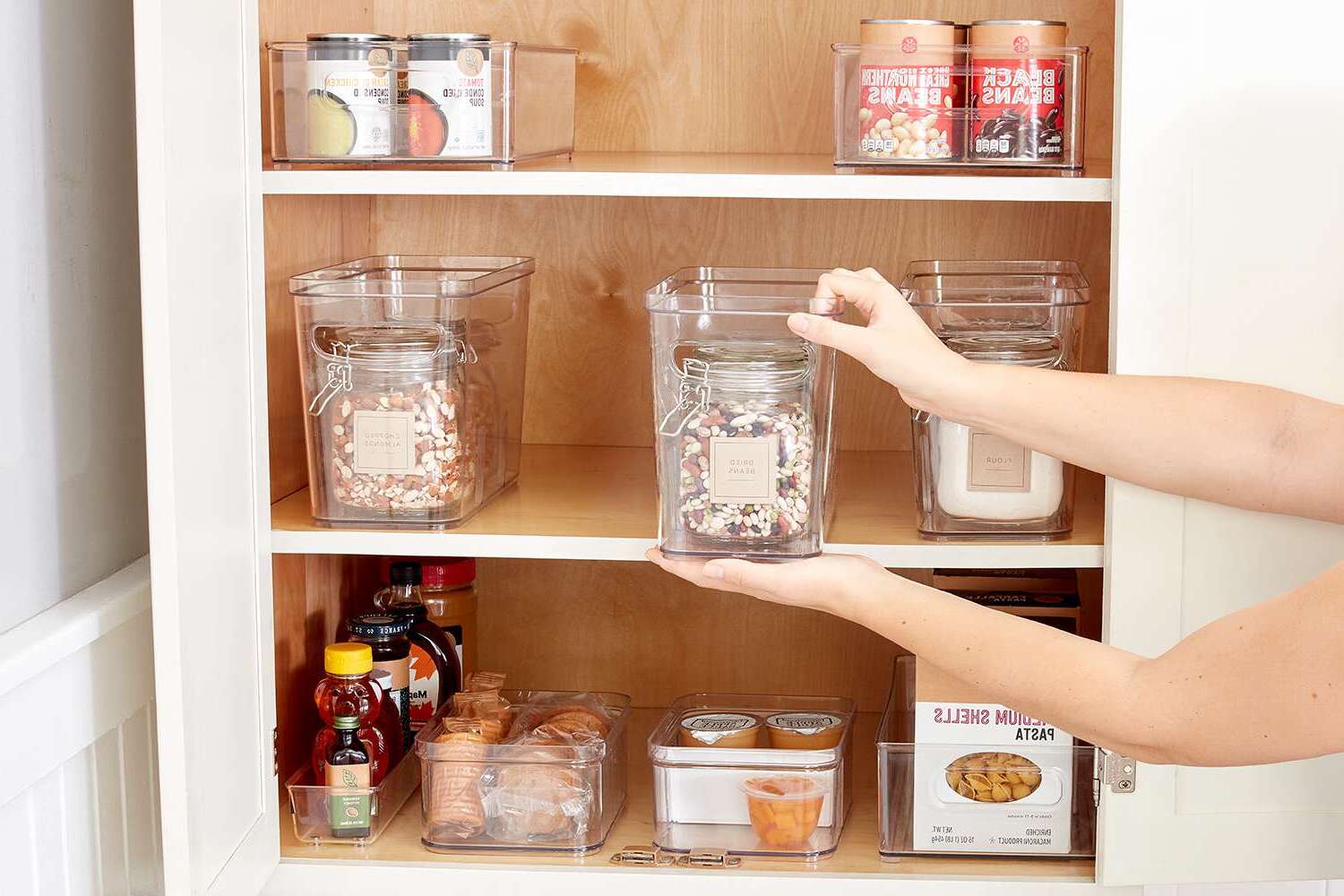Home>Create & Decorate>DIY & Crafts>How To Build A Shelf
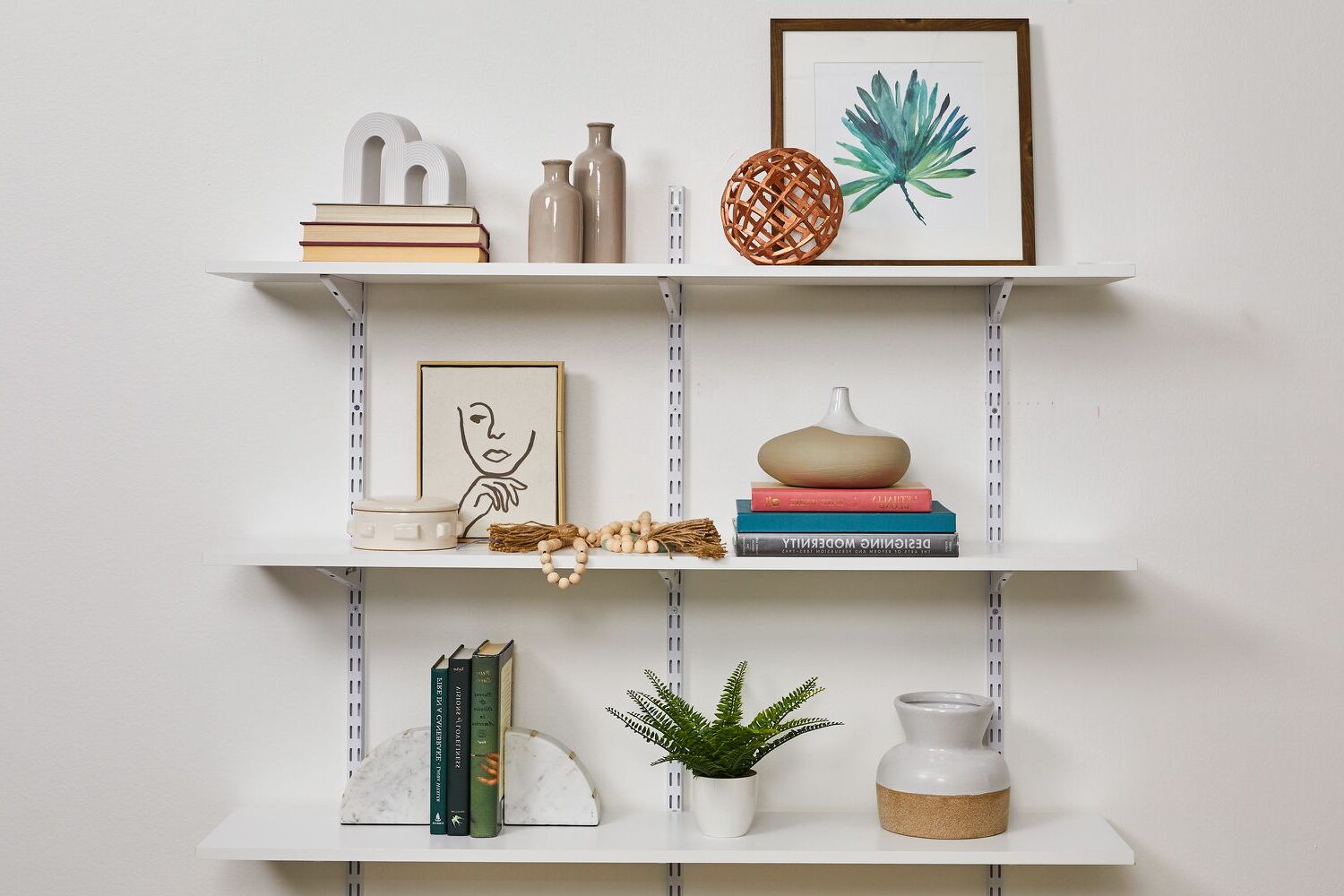

DIY & Crafts
How To Build A Shelf
Published: February 23, 2024

Content Creator specializing in woodworking and interior transformations. Caegan's guides motivate readers to undertake their own projects, while his custom furniture adds a personal touch.
Learn how to build a shelf with our easy DIY & Crafts guide. Get step-by-step instructions and create your own custom storage solution.
(Many of the links in this article redirect to a specific reviewed product. Your purchase of these products through affiliate links helps to generate commission for Twigandthistle.com, at no extra cost. Learn more)
Introduction
Welcome to the world of do-it-yourself (DIY) woodworking! Building a shelf from scratch is a rewarding and practical project that allows you to unleash your creativity while adding a functional piece to your home. Whether you're a seasoned DIY enthusiast or a newcomer to the craft, this step-by-step guide will equip you with the knowledge and confidence to create a sturdy and stylish shelf that suits your space and personal taste.
As you embark on this woodworking journey, envision the satisfaction of showcasing your favorite books, decorative items, or kitchen essentials on a shelf that you built with your own hands. The process of constructing a shelf involves precision, patience, and a touch of artistry, making it an ideal project for honing your woodworking skills and unleashing your inner craftsman.
By following the detailed instructions provided in this guide, you'll gain valuable insights into selecting the right materials, accurately measuring and cutting wood, assembling a sturdy frame, and adding the finishing touches that elevate your shelf from a mere storage unit to a visually appealing and functional piece of furniture.
Whether you're setting up a cozy reading nook, organizing your garage, or enhancing the ambiance of your living space, a custom-built shelf can be tailored to meet your specific needs and complement the existing decor. Embrace the opportunity to experiment with different wood finishes, explore innovative design concepts, and bring your vision to life through the art of woodworking.
So, roll up your sleeves, gather your tools, and let's dive into the enriching process of crafting a shelf that reflects your individuality and enhances the functionality of your living space. With each step, you'll witness the transformation of raw materials into a practical and aesthetically pleasing shelf that stands as a testament to your creativity and craftsmanship. Let's embark on this woodworking adventure together and bring your dream shelf to life!
Read more: How to Build a DIY Window Shelf
Step 1: Gather Materials and Tools
Before diving into the construction process, it's crucial to gather all the necessary materials and tools to ensure a smooth and efficient workflow. Here's a comprehensive list of items you'll need to bring your shelf-building project to fruition:
Materials:
- Wood: Select high-quality lumber that suits your design preferences and intended use. Consider factors such as durability, grain pattern, and finish options. Common choices include pine, oak, maple, or reclaimed wood for a rustic touch.
- Shelf Brackets: Choose sturdy and visually appealing brackets that complement the overall aesthetic of your shelf. These can range from simple L-shaped brackets to ornate decorative options.
- Wood Screws: Opt for screws of appropriate length and gauge to securely fasten the shelf components. Ensure that the screws are designed for woodworking applications to prevent splitting the wood.
- Wood Glue: Invest in a reliable wood adhesive to reinforce joints and enhance the structural integrity of the shelf.
- Sandpaper: Acquire sandpaper with varying grits to smoothen the wood surfaces and achieve a polished finish.
- Wood Finish: Select a suitable finish, such as stain, paint, or clear varnish, to protect the wood from moisture, enhance its natural beauty, and complement your decor.
Tools:
- Measuring Tape: A precise measuring tape is essential for obtaining accurate dimensions and ensuring uniformity in the shelf's construction.
- Circular Saw or Miter Saw: Depending on your design, a circular saw or miter saw will facilitate precise wood cutting for the shelf components.
- Drill and Bits: A power drill equipped with drill bits is indispensable for creating pilot holes and driving screws into the wood.
- Screwdriver: Have a set of screwdrivers on hand, including both flathead and Phillips head, for manual screw installation.
- Clamps: Utilize clamps to hold wood pieces in place during assembly, promoting stability and alignment.
- Level: A level ensures that the shelf is installed evenly and securely, preventing items from sliding off.
By assembling these materials and tools, you'll set the stage for a successful shelf-building endeavor, laying the groundwork for precise measurements, seamless assembly, and a professional finish. With these essentials at your disposal, you're ready to embark on the next phase of the woodworking journey: measuring and cutting the wood to bring your shelf design to life.
Step 2: Measure and Cut the Wood
Accurate measurements and precise wood cutting are pivotal steps in the construction of a sturdy and visually appealing shelf. Before wielding your saw, take the time to carefully measure and mark the wood, ensuring that each piece aligns with your design specifications. Here's a detailed breakdown of the process:
1. Measure Twice, Cut Once
Begin by measuring the dimensions for the shelf components, including the length, width, and thickness of the wood. Use a reliable measuring tape to obtain precise measurements, and double-check each dimension to minimize errors. Remember the age-old adage: "Measure twice, cut once."
2. Marking the Wood
Once the measurements are confirmed, use a pencil and a straight edge to mark the cutting lines on the wood. Ensure that the lines are clear and easily visible, as they will serve as your guide during the cutting process. Take into account any specific angles or notches required for your shelf design.
3. Selecting the Cutting Tool
Depending on the complexity of your design and the type of cuts needed, choose the appropriate cutting tool. A circular saw is ideal for straight cuts, while a miter saw excels at creating precise angled cuts for corners and joints. Prioritize safety by wearing protective gear and following the manufacturer's guidelines for operating the cutting tool.
4. Executing the Cuts
Carefully position the wood on a stable work surface and align the cutting tool with the marked lines. Exercise caution and steady control as you guide the saw through the wood, maintaining a consistent speed to achieve clean and accurate cuts. If your design involves intricate details or notches, employ a chisel or jigsaw to finesse the edges as needed.
5. Verifying the Fit
After cutting each piece, verify that it aligns seamlessly with the other components of the shelf frame. Check for any discrepancies in length or angles, and make adjustments as necessary to ensure a snug and precise fit during assembly.
By meticulously measuring and cutting the wood according to your design specifications, you'll lay the foundation for a well-crafted shelf that exudes quality and craftsmanship. With the shelf components now taking shape, the next step involves assembling the frame to bring your vision closer to reality.
Step 3: Assemble the Shelf Frame
With the individual components of the shelf cut to precision, it's time to transition from separate pieces to a unified structure by assembling the shelf frame. This pivotal step requires attention to detail and a focus on achieving sturdy joints and seamless connections. Here's a comprehensive guide to the assembly process:
1. Organize the Components
Lay out all the cut wood pieces in an organized manner, ensuring that you have a clear view of each component. Take a moment to visualize the arrangement and confirm that you have all the necessary parts before commencing the assembly.
2. Positioning and Alignment
Begin by positioning the vertical and horizontal pieces according to your design, taking care to align them accurately. Use a carpenter's square to ensure that the corners form perfect right angles, promoting stability and uniformity in the frame.
Read more: DIY Pallet Wall Shelf for Bedroom
3. Preparing for Joinery
If your design incorporates joinery techniques such as dado joints, mortise and tenon joints, or pocket hole screws, prepare the wood surfaces accordingly. Create pilot holes for screws, or chisel out precise notches for joinery, ensuring a snug and secure fit for the joints.
4. Reinforcement with Wood Glue
Apply a thin, even layer of wood glue to the joining surfaces before assembling the frame. The wood glue acts as a reinforcement, enhancing the strength of the joints and promoting long-term durability. Wipe off any excess glue to prevent unsightly residue.
5. Securing the Joints
Carefully bring together the individual components, ensuring that the joints fit snugly and the pieces align as intended. If using screws, drive them into the pre-drilled pilot holes, exerting gentle pressure to avoid splitting the wood. For joinery, use clamps to hold the pieces in place as the glue sets, ensuring a tight bond.
6. Verifying Stability
Once the frame is assembled, verify its stability and structural integrity. Gently test the joints and connections to ensure that the frame holds together firmly without any wobbling or misalignment. Make any necessary adjustments to achieve a stable and well-aligned frame.
By methodically assembling the shelf frame with precision and care, you'll lay the groundwork for a robust and visually appealing structure that forms the backbone of your custom-built shelf. With the frame taking shape, the next phase involves attaching the shelf boards to complete the construction process.
Read more: How to Build DIY Garage Shelf Brackets
Step 4: Attach the Shelf Boards
With the shelf frame standing strong, it's time to elevate the functionality of your creation by attaching the shelf boards. This step involves precision and attention to detail to ensure that the boards are securely affixed, creating a stable surface for displaying your cherished items. Here's a detailed breakdown of the process:
-
Positioning the Boards: Begin by positioning the shelf boards onto the frame, ensuring that they align evenly and sit flush against the horizontal supports. Take into account any specific spacing or arrangement requirements based on your design preferences.
-
Securing the Boards: Utilize wood screws or finish nails to secure the shelf boards to the frame. Position the fasteners at regular intervals along the length of the boards, ensuring a secure attachment while maintaining a visually appealing finish. Pre-drill pilot holes to prevent the wood from splitting during the fastening process.
-
Reinforcement with Wood Glue: For added stability, apply a thin bead of wood glue along the edges of the shelf boards before affixing them to the frame. This additional reinforcement enhances the bond between the boards and the frame, promoting long-term durability.
-
Checking for Level: Use a level to verify that the shelf boards are installed evenly, preventing items from sliding or tilting when placed on the shelf. Make any necessary adjustments to ensure a level surface that enhances both functionality and aesthetics.
-
Finishing Touches: Once the shelf boards are securely attached, inspect the entire structure for any protruding screws or rough edges. Use sandpaper to smoothen the surfaces and eliminate any imperfections, creating a polished and professional finish.
By meticulously attaching the shelf boards to the frame, you'll transform the skeletal structure into a fully functional and visually appealing shelf that is ready to adorn your living space. With the construction process nearing completion, the final step involves adding the finishing touches that elevate your custom-built shelf to its full potential.
Step 5: Sand and Finish the Shelf
With the structural elements of the shelf in place, the final phase involves refining the wood surfaces and applying a finish that enhances both the aesthetic appeal and longevity of the shelf. This crucial step elevates the shelf from a raw construction to a polished and visually captivating piece of furniture. Here's a detailed breakdown of the sanding and finishing process:
1. Smoothening the Wood Surfaces
Begin by using fine-grit sandpaper to gently sand the entire surface of the shelf, including the frame and the attached boards. Work methodically, following the natural grain of the wood to achieve a smooth and uniform texture. Pay special attention to any rough edges, corners, or imperfections, ensuring that the entire surface is free from splinters and rough patches.
2. Progressing through Grits
Gradually progress to finer grits of sandpaper to achieve a polished finish. Start with a medium-grit sandpaper to remove any visible scratches or blemishes, then transition to a fine-grit sandpaper to further refine the wood surfaces. This meticulous approach results in a velvety-smooth texture that invites touch and showcases the natural beauty of the wood.
Read more: DIY Apartment Bar Ideas
3. Removing Dust and Residue
After sanding, use a clean, dry cloth or a tack cloth to remove any dust and sanding residue from the wood surfaces. Thoroughly wipe down the entire shelf, ensuring that no particles remain that could compromise the finish. This preparatory step sets the stage for a flawless application of the chosen finish.
4. Applying the Finish
Select a finish that aligns with your design vision and complements the surrounding decor. Options include wood stain for a rich, colored finish, clear varnish for a glossy protective layer, or paint for a personalized touch. Apply the chosen finish evenly using a brush or a clean cloth, following the manufacturer's instructions for the best results.
5. Allowing for Drying and Curing
Once the finish is applied, allow the shelf to dry and cure according to the recommended duration specified by the product manufacturer. This crucial phase ensures that the finish sets properly, creating a durable and lustrous surface that enhances the natural characteristics of the wood.
6. Final Inspection
After the finish has dried, inspect the shelf for uniform coverage and a flawless finish. Look for any areas that may require additional touch-ups or a second coat of finish to achieve the desired effect. Once satisfied, step back and admire the transformation of raw wood into a refined and visually striking shelf.
By meticulously sanding and applying a finish to the shelf, you'll unveil the inherent beauty of the wood while safeguarding it against wear and tear. This transformative process culminates in the creation of a custom-built shelf that not only serves a practical purpose but also stands as a testament to your craftsmanship and attention to detail.
Conclusion
As you stand back and admire the custom-built shelf that now graces your living space, take a moment to revel in the fulfillment that comes from transforming raw materials into a functional and visually captivating piece of furniture. The journey of crafting a shelf from scratch is a testament to your creativity, precision, and dedication to the art of woodworking. Each step of the process, from gathering materials to applying the finishing touches, has contributed to the creation of a tangible manifestation of your craftsmanship.
Beyond the tangible outcome, the experience of building a shelf has likely enriched your understanding of woodworking techniques, joinery principles, and the transformative power of finishes. The amalgamation of measurements, cuts, and assembly has not only resulted in a practical piece of furniture but has also honed your skills as a craftsman, empowering you to undertake future woodworking projects with confidence and proficiency.
Moreover, the custom-built shelf stands as a reflection of your individuality and design sensibilities, tailored to complement your living space and fulfill your specific storage needs. Whether it graces a cozy reading nook, adds organization to your garage, or serves as a decorative and functional element in your kitchen, the shelf embodies your vision and enhances the ambiance of its surroundings.
As you bask in the satisfaction of completing this woodworking endeavor, remember that the journey of craftsmanship is an ongoing pursuit. Each project presents an opportunity to refine your skills, explore new design concepts, and infuse your personal touch into the creations that enrich your living environment. Embrace the lessons learned from this shelf-building experience and carry them forward as you embark on future woodworking ventures.
In the end, the custom-built shelf symbolizes more than just a piece of furniture; it embodies the dedication, creativity, and passion that define the art of woodworking. It stands as a testament to your ability to transform raw materials into a functional and aesthetically pleasing creation, showcasing the enduring allure of handcrafted woodworking in a world of mass-produced furnishings. So, as you revel in the completion of this project, let the shelf serve as a reminder of the boundless potential that resides within your hands and the enriching journey that awaits in the realm of DIY woodworking.

